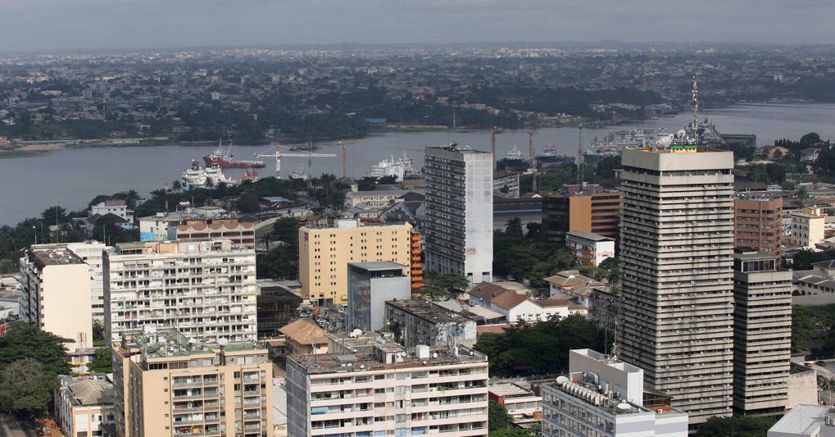Listen to the audio version of the article
The bond fast is broken in sub-Saharan Africa. Côte d’Ivoire will issue a so-called Eurobond next week, government bonds in foreign currency, interrupting the isolation from the markets that had dragged on throughout 2023 and a good part of 2022. The announcement came on January 15 from the president Alassane Ouattara in a television speech from Abidjan, the economic capital of the country. The placement of the security, Ouattara declared, is part of the executive’s strategy for “the transformation of the Ivorian economy” and “the acceleration of investments in many sectors such as digital technologies and transport, as well as the exploitation of recent discoveries of reserves of oil and gas (by the Italian company, Eni, ed.)”. The International Monetary Fund projects Ivorian GDP growth at +6.6% in 2024, undermining the expansion rate of the sub-Saharan region (+4%). The country has the largest production of cocoa and cashew on a global scale, but is trying to diversify a productive fabric dependent on exports and the impacts of climate change on its crops.
From Kenya to Nigeria, the other countries in the running
The Ivorian authorities have not specified the details of the operation, although analysts consulted by the Bloomberg agency predict that the issue will be in US dollars, with a maturity of 10 years and orders in the range between 1 and 1.25 billion dollars. The Ivorian government’s plan marks the return of a sub-Saharan African country to the Eurobond market, unblocking a “drought” that began 22 months ago with the Fed interest rate bullish cycle and its domino effect on dollar-denominated debts. The latest issue dates back to April 2022, when Angola placed a $1.75 billion bond with a ten-year maturity and yields of 8.75%. Then a void that expanded for almost two years, with 2023 starting and ending without any government issue of a crucial instrument for raising funds in support – and alternative – to the atrophic dimensions of the stock market. The last year of a total sales drought dates back to 2009, in the midst of the financial crisis and its repercussions on emerging economies. The one experienced over a decade was born from the upward spiral of rates and a global economic situation undermined by the aftermath of the pandemic crisis and wars in Ukraine and Israel.
Some analysts cited by Bloomberg hypothesize that 2024 could favor a broader reopening of the debt market, with a list of candidates for new issues that includes big continental ones such as Kenya, Angola and the two main African economies: South Africa and Nigeria . Kenya itself had announced a placement in 2023, only to officially withdraw it at the end of the year due to “the high cost of borrowing” of the debt expressed in the greenback: the currency that dominates bond issues south and north of the Sahara, both in absolute both in comparison with the other strong currencies euro and yen. The bond spotlight would be intertwined with the less gloomy prospects announced on the economic front, starting from the growth rates expected in the sub-Saharan region. The International Monetary Fund notes that 6 out of the 10 fastest growing economies in 2024 will be African, in an upward trend led by Ivory Coast and followed by the cases of Ethiopia (+6.2%), Tanzania (+ 6.1%), Uganda (+5.7%), Kenya (+5.3%), Democratic Republic of Congo (+4.7%). The other four fastest-growing countries in the region are Angola (+3.3%), Nigeria (+3.1%), Ghana (+2.7%) and South Africa (+1.8%).
The risks that (also) hinder the return to bonds
There are those who are less optimistic. Moody’s Investors Service released a negative outlook for the sub-Saharan market on January 10, highlighting among the critical factors the amount of debt maturing in 2024 and prohibitive re-financing costs for the majority of continental economies. The rating agency highlights that the next 12 months foresee the balance of loans equal to 5 billion US dollars, a portion dominated by a 1.5 billion bond maturing in June for South Africa and a 2 billion dollar arriving in June for Kenya. The increase in rates caused by the Fed’s tightening and the shortage of foreign currency can complicate new bond issues, even more so in the scenario of a slowdown in global GDP growth and its repercussions on economies that alternate record prospects of nominal growth and intrinsic fragility to their economic systems. An example emerges from the same IMF list of countries that are expected to record the highest rate of most robust expansion in 2024. Ethiopia and Ghana are returning from default on their external debt in 2023 and 2022, a double thump that adds to the one suffered by Zambia in 2020. The continental giants, Nigeria and South Africa, are at the mercy of internal tensions ranging from the uncertain start of Tinubu’s presidency in Abuja and the economic and political fibrillations in Pretoria in view of the 2024 elections.
